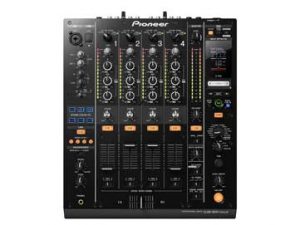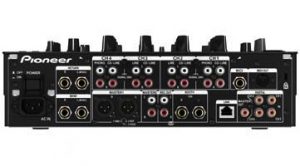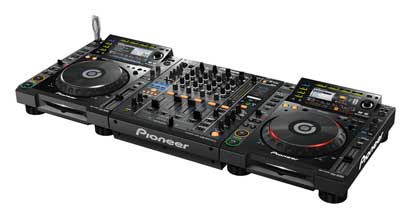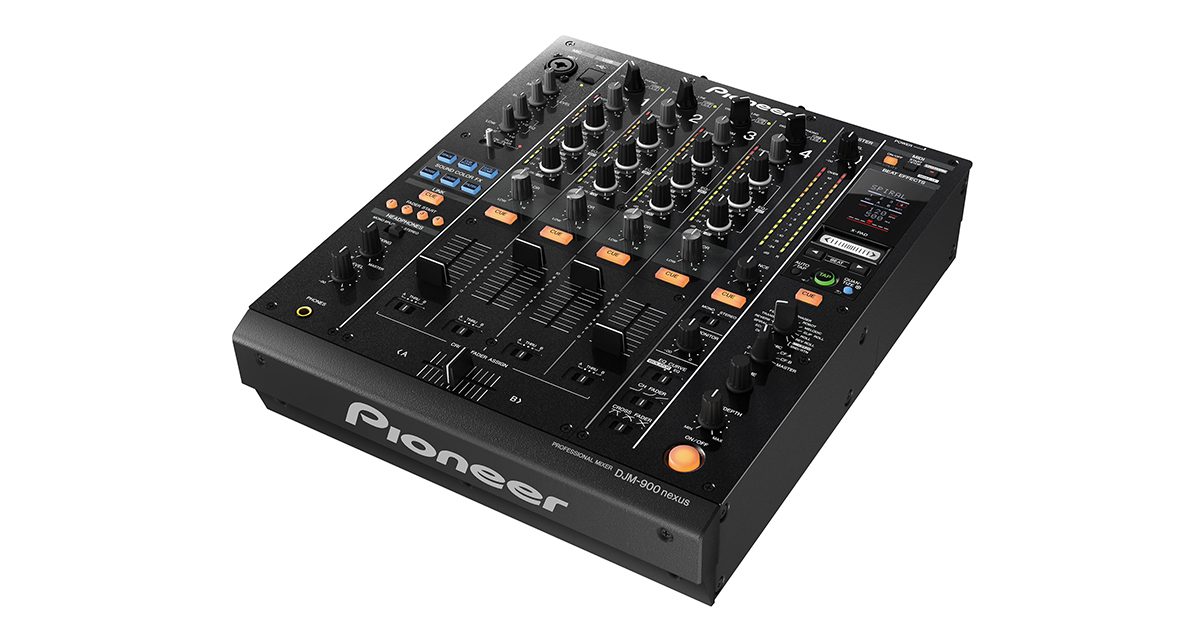
From the picture it probably looks eerily familiar to you. If you’ve DJed in any decent club (at least here in Europe) in the last few years, you’ve more than likely done so using a Pioneer DJM-800 mixer. Today, Pioneer has announced what it surely hopes will be the successor to the DJM-800 – the DJM-900NEXUS.
With a built-in sound card, USB for digital DJs, and Traktor certification out of the box, plus a big emphasis on sound quality, Pioneer has taken note of the changing DJ climate and attempted to reposition its popular club mixer to remain relevant in these changing times. Will it succeed? Let’s have a first review and make a prediction…
Different DJs play in vastly different ways nowadays – DVS, controllers, CDJs, vinyl, Ableton Live, hell even using Pioneer’s RekordBox software (not met one yet, but they must be out there). It seems that Pioneer has realised this, because its “DJM-800 Mk 2” has got features to please all of these people:
Traktor functionality
“Using a USB connection with a PC or Mac, the four decks (players) inside Traktor can be connected simultaneously with the mixer,” says Pioneer.
This is huge news, and is Pioneer reaffirming that Traktor, and therefore controllerism, is here to stay. (The system also supports Traktor Scratch by the way. No need to carry your Traktor box around with you any more, DVS DJs…) Let’s return to controlling Traktor Pro 2’s four decks: the fact that it is mapped to do this out-of-the-box is a potential game-changer.
As this device is, not surprisingly, Midi-mappable, you could take even more of the functionality out of the software and map it to the mixer’s controls (although there aren’t as many assignable knobs and buttons as you might want – an X1 alongside this might be a dream set-up). But the fact that it has this functionality advertised at all, and that it may well soon be a standard wherever you turn up to DJ in a pro clubs? That’s big news.
More effects

Pioneer has gone to town on the effects section of this mixer. There are six “Sound Color FX” (the three new ones are Space, Dub Echo and Gate/Comp) alongside 13 beat effects, a new “X-Pad” controller which is basically a touch strip for rapid manipulation of effects parameters, and the ability to come up with your own combinations and arrangements of all of the above. With these, Pioneer has gone some way towards addressing the criticism that their onboard FX sections can be a little simplistic compared to the best of of the competition.
Hardware effects in mixers make sense even for laptop DJs, as they add another layer of possible manipulation to your performance, and it’s good to see Pioneer following Allen & Heath’s lead (with their Xone:DB4) by adding new toys in this area.
Better sound quality
We haven’t yet heard this mixer, but Pioneer may have felt the pain of criticism of the sound quality of some of its products compared to the very best of the rest, because they’re certainly making a big show of the sound quality.

It has obviously got a built-in sound card, which is 24-bit/96kHz and looks like it is 8-in, 8-out. Flexibility is assured with a PC/Mac utility that allows various routings to be made to suit your workflow, and two top-mounted USBs* are present and correct for quick DJ switches in the booth. It’s not an amazing spec, and an on-board sampler would have made this really juicy, but it’s good.
* “Smooth transfers between DJs are possible with the easily accessible USB ports on the top surface of the mixer” says Pioneer, but we could only see one port. Need clarification on this…
Conclusion
It’s clear now what Pioneer wants to be the de facto standard in DJ booths worldwide – this mixer and two CDJ-2000s. With such a set-up, easy practical accommodation of DVS DJs, CD DJs, Traktor DJs, vinyl DJs and DJs using RekordBox (Pioneer’s own library management software, for which this mixer is also set up) looks simple.
Probably in order to encourage take-up to the point where the mixer is a new standard, Pioneer has avoided some of the bells and whistles of behemoths like the Allen & Heath Xone:DB4, walking the line between making the product instantly recognisable (and usable) and taking on the best of recent developments in DJ mixers.
With top-grade assignable onboard effects, decent built-in sound processing, and most important of all, a design acceptance that digital technologies are here to stay into pro DJ boxes and therefore that mixers have to keep up, Pioneer is making a clear bid to stay relevant. (The mixer has some pretty serious Midi capability too, by the way.)

If the gamble pays off and Pioneer succeeds in getting this mixer and two CDJ-2000s into a critical mass of DJ boxes worldwide, it will not only earn a hefty whack for itself (that would not be not a cheap set-up), but at the same time will give all types of pro DJ a level playing field for the first time since two technics and a DJM-600.
That is something that arguably needs to happen one way or another, and this mixer might just have given us the first glimpse of what that standard may soon be.
• The recommended retail price of the mixer is US$2,399
Full video
Do you think Pioneer has played a smart move releasing the DJM-900NEXUS? Are there features you’d like to have seen included that they’ve left out? Can you see it becoming the new club standard? Let us know your thoughts below.






![How Much To Spend On Your First DJ Set-Up [Live DJing Q&A With Phil Morse] How Much To Spend On Your First DJ Set-Up [Live DJing Q&A With Phil Morse]](https://cdn.digitaldjtips.com/app/uploads/2023/05/10150246/546463231-first-dj-setup-blank-website.jpg)

